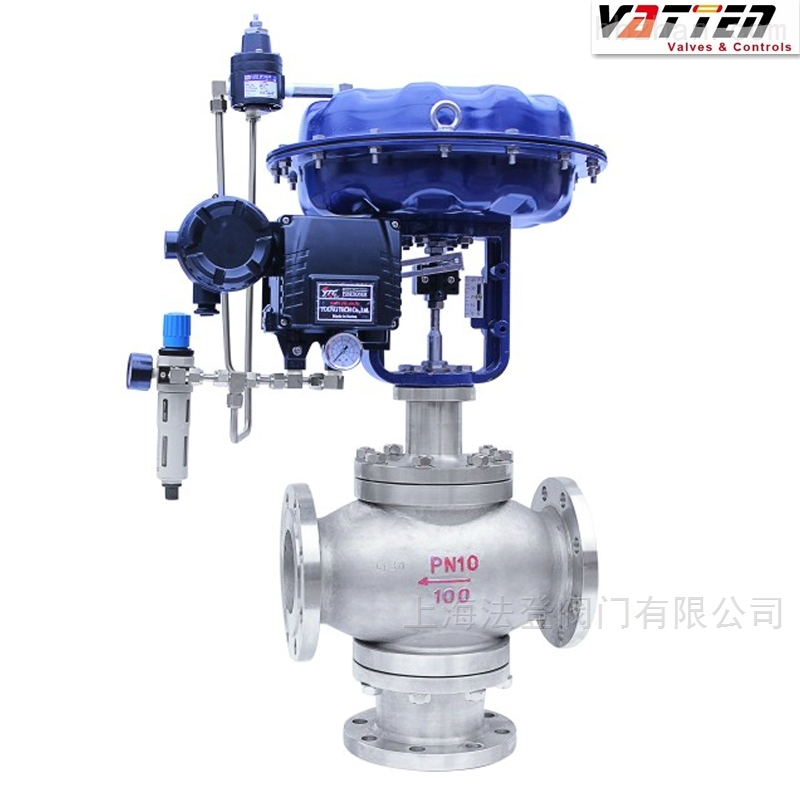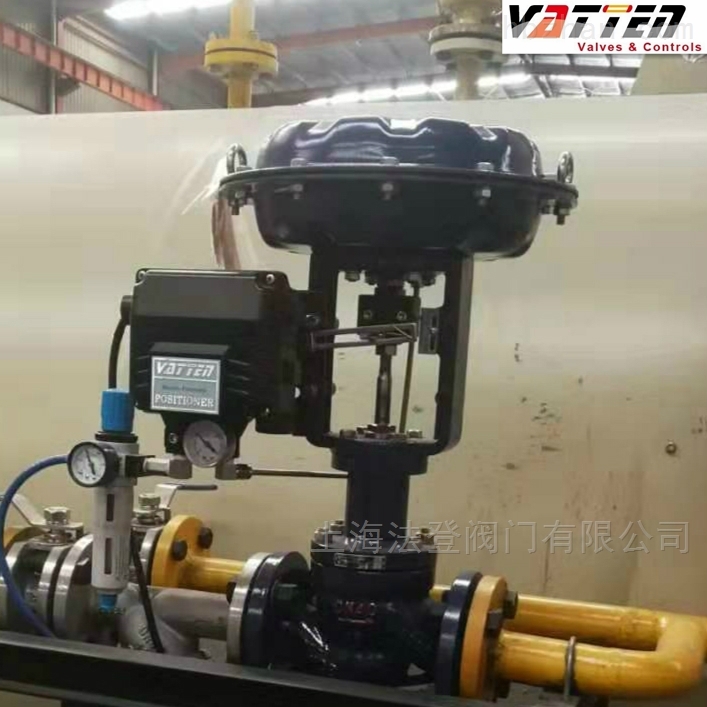GRP FRP Pultrusion Profile,Fiberglass Threaded Bolts,Fiber Bolts Nuts,GRP Frp Bolts Hebei aoliande Chemical Equipment Co., Ltd , https://www.aoliandechemical.com


Principle and classification of valve positioner
Germany VATTEN Faden valve analyzes the principle and classification of valve positioner for you
Valve positioner (valvepositioner) Valve positioner is divided according to structure: pneumatic valve positioner, electric valve positioner and intelligent valve positioner are the main accessories of the control valve, usually used in conjunction with the pneumatic control valve, it accepts the output signal of the regulator Then, it uses its output signal to control the pneumatic regulating valve. After the regulating valve acts, the displacement of the valve stem is fed back to the valve positioner through the mechanical device, and the valve position status is transmitted to the upper system through the electrical signal.
Valve positioners can be divided into pneumatic valve positioners, electro-pneumatic valve positioners and intelligent valve positioners according to their structure and working principle.
The valve positioner can increase the output power of the regulating valve, reduce the occurrence of lag in the transmission of the regulating signal, speed up the movement speed of the valve stem, can improve the linearity of the valve, overcome the friction force of the valve stem and eliminate the influence of unbalanced force, So as to ensure the correct positioning of the regulating valve.
01 Classification of valve positioners
1. The valve positioner is divided into pneumatic valve positioner, electric valve positioner and intelligent valve positioner according to the input signal.
(1) The input signal of the pneumatic valve positioner is a standard gas signal, for example, 20 ~ 100kPa gas signal, and its output signal is also a standard gas signal.
(2) The input signal of the electric valve positioner is a standard current or voltage signal, for example, 4 ~ 20mA current signal or 1 ~ 5V voltage signal, etc., the electric signal is converted into electromagnetic force inside the electric valve positioner, and then the gas signal is output To toggle the control valve.
(3) The intelligent electric valve positioner converts the current signal output from the control room into the gas signal that drives the regulating valve. According to the friction force of the valve stem when the regulating valve is working, it offsets the unbalanced force generated by the pressure fluctuation of the medium and makes the valve open. Corresponds to the current signal output by the control room. And can be intelligently configured to set the corresponding parameters to achieve the purpose of improving the performance of the control valve.
2. According to the direction of action, it can be divided into one-way valve positioner and two-way valve positioner. When the one-way valve positioner is used in a piston-type actuator, the valve positioner works in only one direction, and the two-way valve positioner acts on both sides of the cylinder of the piston-type actuator, acting in two directions.
3. According to the gain symbols of the output and input signals of the valve positioner, it is divided into a positive-acting valve positioner and a reverse-acting valve positioner. When the input signal of the positive-acting valve positioner increases, the output signal also increases, so the gain is positive. When the input signal of the reaction valve positioner increases, the output signal decreases, so the gain is negative.
4. According to whether the input signal of the valve positioner is an analog signal or a digital signal, it can be divided into ordinary valve positioners and fieldbus electrical valve positioners. The input signal of the ordinary valve positioner is an analog air pressure or current, voltage signal, and the input signal of the fieldbus electrical valve positioner is a digital signal of the fieldbus.
5. According to whether the valve positioner is equipped with CPU, it can be divided into ordinary electric valve positioner and intelligent electric valve positioner. Ordinary electrical valve positioners do not have a CPU, so they do not have intelligence and cannot handle related intelligent operations. The intelligent electrical valve positioner has a CPU, which can handle related intelligent operations, for example, non-linear compensation of the forward channel, etc., and the fieldbus electrical valve positioner can also have PID and other functional modules to realize the corresponding operation.
6. It can also be classified according to the detection method of the feedback signal. For example, a valve positioner that detects a valve position signal by a mechanical connecting rod method: a valve positioner that detects a displacement of a valve stem using a Hall effect detection displacement method: a valve positioner that detects a displacement of a valve stem using an electromagnetic induction method, etc.
02 The working principle of the positioner
The valve positioner is the main accessory of the control valve. It uses the valve stem displacement signal as the input feedback measurement signal and the controller output signal as the set signal for comparison. When there is a deviation between the two, the output to the actuator is changed. The signal causes the actuator to move, establishing a one-to-one correspondence between the displacement of the valve stem and the output signal of the controller. Therefore, the valve positioner constitutes a feedback control system that uses the displacement of the valve stem as the measurement signal and the output of the controller as the set signal. The manipulated variable of this control system is the output signal from the valve positioner to the actuator. (1) It is used for important adjustment systems with high requirements for adjustment quality to improve the positioning accuracy and reliability of the adjustment valve.
(2) For the occasions where the pressure difference between the two ends of the valve is large (â–³ p> 1MPa). By increasing the pressure of the air source, the output force of the actuator is increased to overcome the unbalanced force generated by the liquid on the valve core and reduce the stroke error.
(3) When the adjusted medium is high temperature, high pressure, low temperature, toxic, flammable, and explosive, in order to prevent external leakage, the packing is often pressed very tightly, so the friction between the valve stem and the packing is large. Using a positioner can overcome the time lag.
(4) When the medium to be adjusted is a viscous fluid or contains solid suspended solids, the positioner can overcome the resistance of the medium to the movement of the valve stem.
(5) Used for large-diameter (Dg> 100mm) regulating valve to increase the output thrust of the actuator.
(6) When the distance between the regulator and the actuator is more than 60m, the positioner can overcome the transmission lag of the control signal and improve the reaction speed of the valve.
(7) Used to improve the flow characteristics of the control valve.
(8) When one regulator controls two actuators to perform split-range control, two positioners can be used to accept low input signal and high input signal respectively, then one actuator's low-level action and the other high-level action constitute the sub-range Process adjustment.